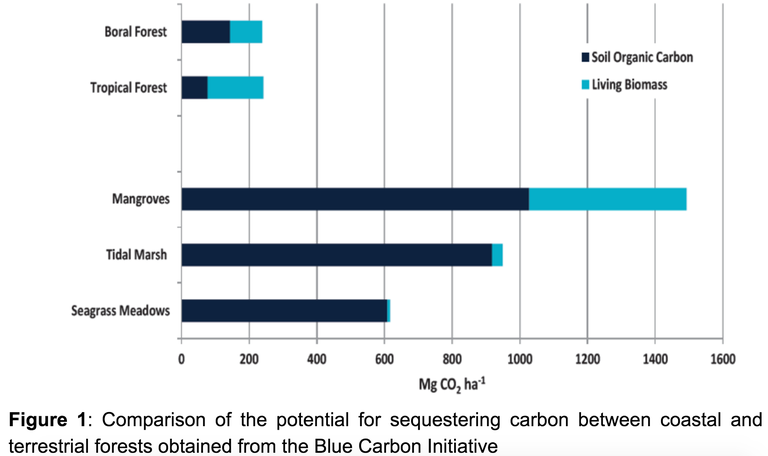Blue carbon for a sustainable world
What is blue carbon?
Blue carbon is a relatively new concept integrating the fields of marine conservation, coastal management, and climate change. Blue carbon is used to refer to the biological processes that result in carbon captured by marine living organisms, coastal and marine ecosystems. The term is generally applied to the carbon sequestration by vegetated coastal ecosystems, mainly mangroves, salt marshes and seagrasses.
Why is it so important?
First, blue carbon can be considered an added means for conservation. For instance, the successful implementation of blue carbon thinking could have great impacts on coastal ecosystems, particularly at risk due to high level of urbanization on the coastline - remember, more than the half of the global population lives on the coast and this share is still increasing.
In addition, studies show that conserving near shore coastal vegetated ecosystems, like mangroves, leads to the storage of carbon in soils. In other words, mangroves, salt marshes and seagrasses present some new climate change mitigation benefits that we need to further explore.

What is research doing on blue carbon?
The International Chair in Marine Ecosystem Services (IC-MES) is working on two main interdisciplinary projects in order to (a) develop our understanding of blue carbon ecosystems and (b) produce some policy-relevant advice on them:
- An international project funded by the Global Environment Facility on Blue Forests
- The creation of an interdisciplinary think tank on blue carbon, with a focus on francophone countries
